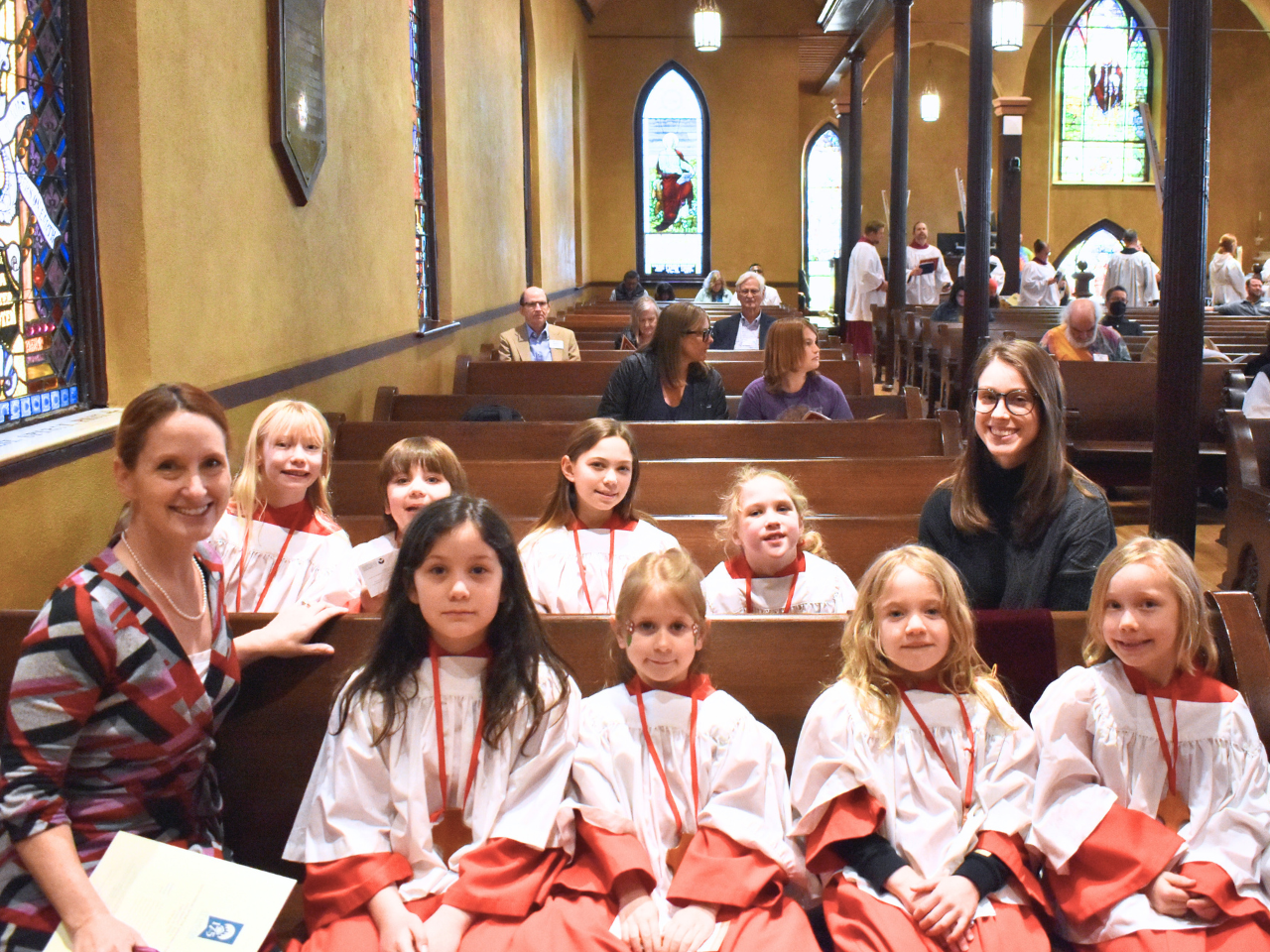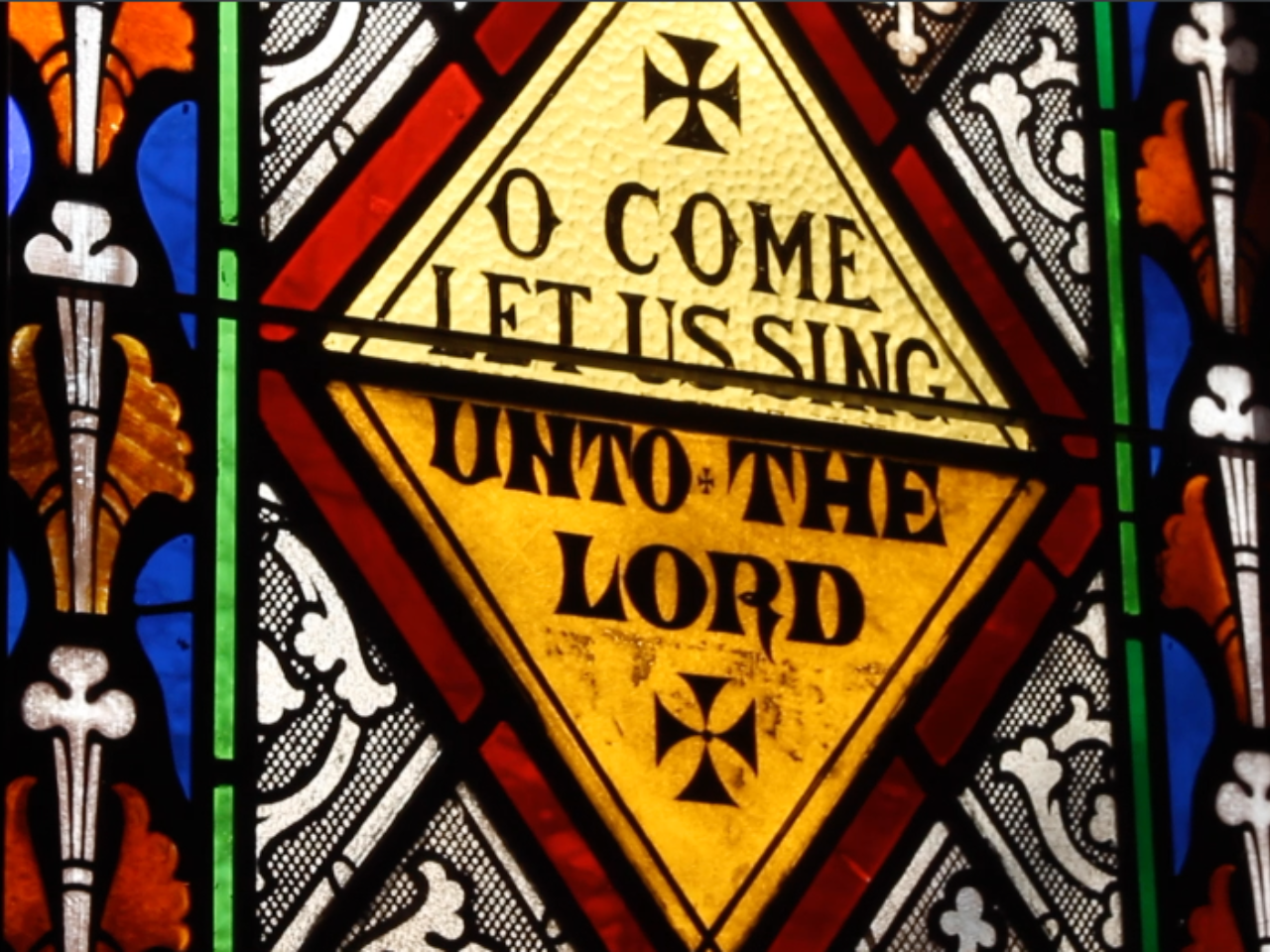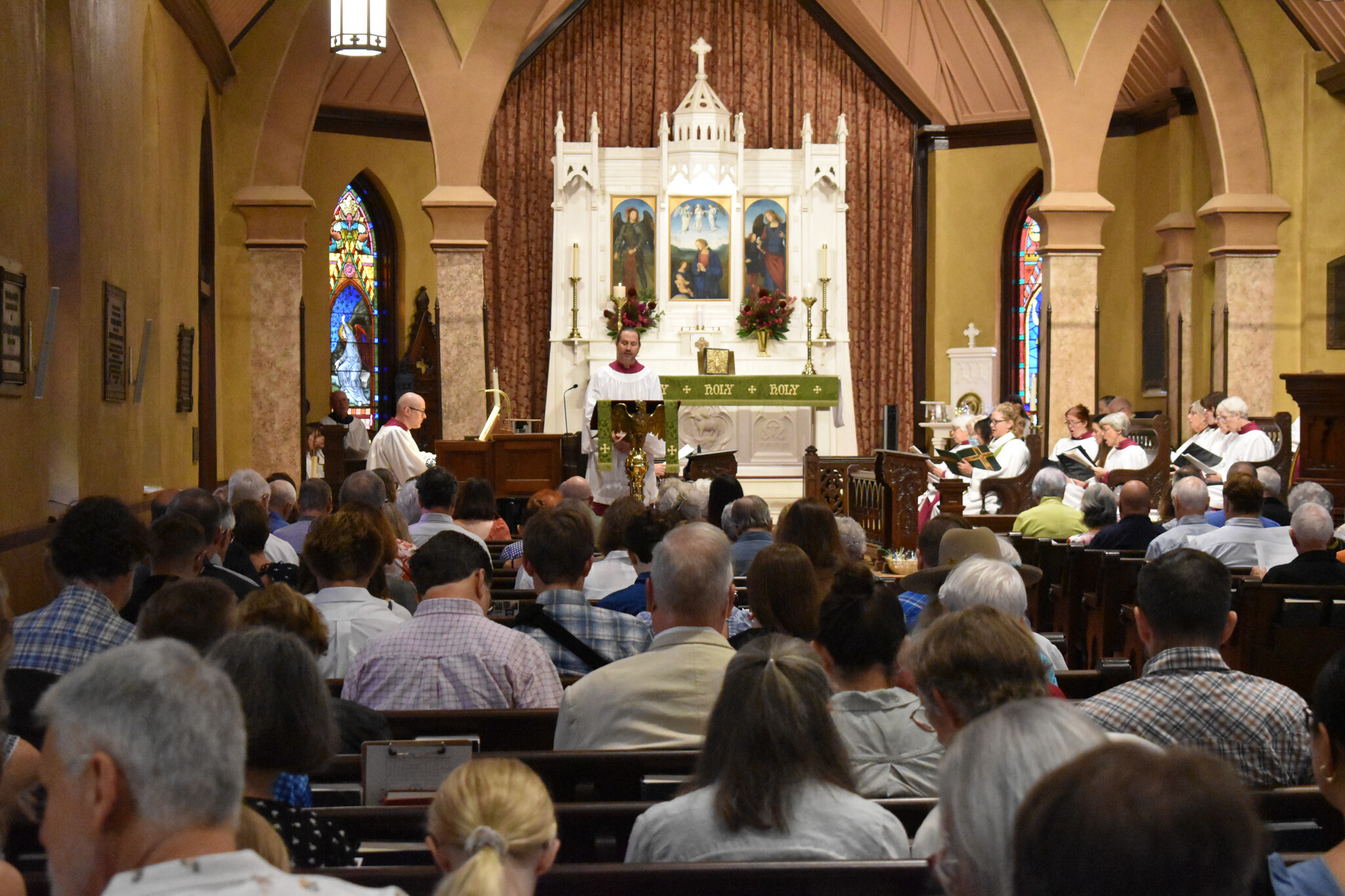
PALM SUNDAY – APRIL 13
8 AM – Holy Eucharist, Rite I with the Liturgy of the Palms and Passion Gospel
9 AM – Holy Eucharist, Rite II, Incorporating Materials from *EOW with Liturgy of the Palms and Passion
11:15 AM – Holy Eucharist, Rite II, with Choral Music with Liturgy of the Palms and Chanted Passion Narrative, livestreamed
Gather in Sumners Hall before the 9 and 11:15 a.m. liturgies for a palm procession.
*Enriching Our Worship
The Triduum (the great Three Days of Maundy Thursday, Good Friday, and Holy Saturday) consists of a single liturgy in three main acts. Palm Sunday, then, serves as the overture to this great sacred drama, previewing, like the musical overture to an opera or piece of musical theater, key themes to be expounded later.
The most striking feature of the Eucharist itself on this day (the Liturgy of the Palms forming its own ritual unit) is the chanting or reading of one of the accounts of Christ’s Passion from Matthew, Mark, and Luke in turn in the three years of the lectionary cycle. The Passion is often read by a number of readers playing the different roles; when chanted, as it will be at 11:15, it is traditionally sung by three cantors representing 1) the Evangelist (narrator), 2) Christ, 3) and all the other roles combined. This tradition of singing the Passion lies behind the famous Passion settings written by Bach and many other composers.
It is during Holy Week, above all other times, that devotional–emotional elements most naturally and appropriately find their way into public worship. A venerable example of this phenomenon is the Stabat Mater, a 13th-century sequence (a type of hymn) recounting the Blessed Virgin’s vigil at the cross – reminding us that she was faithful from first to last, from the Annunciation to the Crucifixion and beyond – and asking that the singer share in Christ’s Passion and, at the last, his triumph over death. The St David’s Choir presents this set to warm, masterfully simple, and emotionally powerful music by Russell Schulz-Widmar, former, longtime Professor of Music at the Seminary of the Southwest and important leader in the creation of the Hymnal 1982. The ‘rocking’ motif of the music suggests a lullaby, which immediately brings to mind the visual parallel of the Stabat Mater: the Pietà, the portrayal of the Blessed Virgin holding the body of her deceased son – and indeed the piece was written for the dedication of such a painting at the Church of the Good Shepherd here in Austin, where Schulz-Widmar was also Director of Music. The composite translation used in this setting, which preserves the meter and the AAB CCB DDE FFE... rhyme scheme (and omits the many stanzas addressing Mary herself), is all the more powerful for its modern, direct language.
At 11:15, in place of a choral Communion anthem, the congregation will sing the seven-stanza ‘My song is love unknown’ [Hymn 458]. Published in 1664 by Samuel Crossman, an Anglican (and sometime Dissenting) clergyman, this intensely personal and emotional text – written in a mood one might call ‘dumbfounded’ – makes excellent use of the chosen stanzaic form: four lines of 6 syllables each, rhymed abab, followed by four lines of 4 syllables each, rhymed cddc. In every stanza the last four lines contain a contradiction (‘but...’, ‘then...’, ‘yet...’) or an intensification and personalization (‘who am I’, ‘O my friend’, ‘What may I say?’, ‘This is my friend’) of the first four, and the many contradictions, reversals, and ironies are also evoked formally in the cddc rhyme. The text is admirably supported by a tune written for it by John Ireland in 1919. Both services end with the beloved spiritual ‘Were you there when they crucified my Lord’ in my jazz-inspired arrangement.





Login To Leave Comment